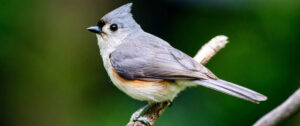As I finish my blog we are marooned by devastating floods which have inundated north-west Tasmania as part of a rain bomb, which has been particularly acute over Victoria and Tasmania. We have our car, but the car ferry is indefinitely cancelled and we have to find our way back to Sydney before the end of next week. In my blog, I had a piece critical of the way a particular amount of money was proposed to be allocated to the local council. While the premise is unchanged, it would have been in poor taste to publish it, given the damage being done to countless settlements in the Meander Valley, making the grant in question seem a paltry sum. Now there is a very good reason to provide funding in the wake of the severest flooding the area has suffered.
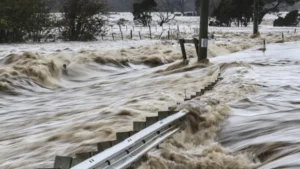
“A Little Flu”
Today is the day that most of the final restrictions relating to COVID have been removed. The question remains as to how effective our reaction to the virus has been.
There seems to be only one person who is still listened to by those children of the business community – the politicians – on public health. He was present when the politicians did not know what to do in early 2020. His intervention at a time when the Federal Cabinet was consumed by an extreme anxiety, when one of their number, Dutton, returned from America with the Virus. It was a time before vaccines, and the hysteria was fomented by comparisons with the Spanish flu outbreak, when millions died worldwide.
The one thing which frightens politicians is a feeling of helplessness. One stratagem is to diminish the threat – “the little flu” of Brazil’s Bolsonaro; another is to wish it will go away – “the Munich response”. Another is to ignore it until it is too late – and believe that once there are signs of improvement, you no longer need expert advice.
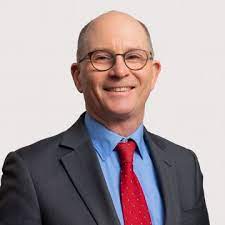
The then new Chief Medical Officer, Paul Kelly, had three important advantages. First, he was expert in public health; second, he had a calming influence while being shrewd enough to balance the plethora of opinion swirling around him to support the most politically acceptable course, while not abandoning all his principles.
Now, almost three years later, Kelly is still in his job and is now the expert face of a basically similar group of politicians, who are now advocating the populace take personal responsibility for its actions at a time when the pandemic is far from over. Such a course of action has enabled the various governments to abrogate their responsibility. The Pauline nuance has changed but he has maintained relevance – albeit by a thin thread.
When the Virus emerged, it was a time when social isolation and personal hygiene were the only strategies; even masks were not generally recommended. It soon became clear that this pandemic would be more than the false alarm generated by other exotic viral infections earlier in the 21st century, which ended up self-contained. Then COVID came along.
When you reflect on the closure of borders and the situations then and now, there are marked changes in the decision makers. No longer is Brendan Murphy paraded as the face of a successful response; Minister Hunt is gone; and one of the major disruptive forces, Gladys Berejiklian, also. She presided over the most egregious breach of the COVID rules when the passengers were hastily disembarked from the Ruby Princess while 600 on board were infected and given the shenanigans which occurred with its sister ship, the Diamond Princess in Japan. It all foreshadowed the final outcome two years later – business eventually dismantling the safeguards and the elderly in particular bearing the brunt of the mantra of “personal responsibility”
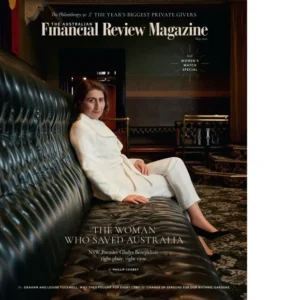 I copped a great deal of criticism about the Ruby Princess fiasco by identifying the wrong target, and in particular being excessively critical of the Chief Health Officer, Kerry Chant. The problem in this world of modern bureaucracy, the minions take the blame. I prefer to look higher up the ladder to attribute blame. Moreover, Berejiklian with her “goodie two shoes” role, rather than accepting some of the blame, appeared in a front page article in the AFR coquettishly posing in virginal white suit, accompanying an article describing her as the saviour of Australia. No wonder that the other Premiers did not warm to her. The Queensland Premier, Annastacia Palaszczuk, aided by her eccentric chief medical officer who now has been buried away from the media as Governor, certainly came in conflict with Berijiklian.
I copped a great deal of criticism about the Ruby Princess fiasco by identifying the wrong target, and in particular being excessively critical of the Chief Health Officer, Kerry Chant. The problem in this world of modern bureaucracy, the minions take the blame. I prefer to look higher up the ladder to attribute blame. Moreover, Berejiklian with her “goodie two shoes” role, rather than accepting some of the blame, appeared in a front page article in the AFR coquettishly posing in virginal white suit, accompanying an article describing her as the saviour of Australia. No wonder that the other Premiers did not warm to her. The Queensland Premier, Annastacia Palaszczuk, aided by her eccentric chief medical officer who now has been buried away from the media as Governor, certainly came in conflict with Berijiklian.
Yet in a pre-vaccine era, with its program of severe lockdowns, with border closures, Australia (together with New Zealand) was seen as the best place in the World to be in controlling the Virus. It was draconian, and only a short term solution, although it was not seen in that light then.
But then, the success story began to fray. The seeds for this had been planted. From the onset, public health became the plaything of the media. The more public health experts could be seen as having different opinions, the more the media harvested spice. The problem is that organised health, and here I include The Australian Faculty of Public Health Medicine, were not proactive in the early days when rules promoting certainty could have been set down.
A further problem, beside the antics of Berejiklian which alienated the other Premiers, was the reflex behaviour of a Prime Minister whose first reaction was to divide, seed doubts and, as became increasingly clear, substitute fiction for facts. Despite the cover of a National Cabinet, no long-term strategy was developed. At the heart of their thinking was that the pandemic would be self-limiting and that eventually it would die down. Then the government could declare success, which it did anyway, if somewhat prematurely.
The second mistake was the government’s choice of vaccines, one was a complete dud; the other adequate, but old technology. Then the deficiencies of a government which had heavily invested in social distancing, enforced by the police, became less and less enforceable.
At the same time there was a series of administrative blunders – delaying investment in the vaccines and then in the rapid tests. The development of mRNA vaccines seemed to blindside the government experts. The Premier of Victoria showed stratagems that worked – the first was that he fronted up every day to report and the second was the implicit transaction which traded level of vaccination with privileges. This could have formed the basis of a long term strategy, but the Virus inconveniently mutated.
Lockdowns had become very unpopular as they became synonymous with high-handed police crackdowns and infringement notices. Then the street protests started by a gaggle of trumpists, liberationists, anti-vaxxers, who recognised the increasing restlessness of the population, was fodder for street revolution.
The vaccines have come with boosters – and now the anti-virals. Influenza, having been absent during the lock-downs, re-emerged
However, the most difficult aspect of maintaining the message was the loss of interest – the daily reports, the interviews with the public experts, the sudden decline in concern which had been initially shown in the plight of nursing home residents; their upset relatives clustered outside the nursing homes being interviewed gradually lessened. Reporting daily became reporting weekly and monthly – and without media commentary, the community has drifted into convenient acceptance.
Restrictions have been removed, although the government has not dared to encourage people not to wear masks in health facilities or nursing homes, and popularity before public safety is found to lead to an easier life for a Premier. Probably this change of attitude was first exemplified by Perrotet when he became Premier. He gradually removed Kerry Chant from centre stage, and while some protested about this, she has become increasingly invisible. Brett Sutton in Victoria did not go as quietly, but now he has a Minister who refuses to release a report on public health until after the forthcoming elections. It is as though the Virus will agree to a truce until after the election. It is as ridiculous a decision as were those of one of her predecessors who unwisely waded into the Virus quagmire early and was politically extinguished. The Premier has not changed. He knows Popularity when he sees it, especially close to elections.
When Perrotet replaced Berejiklian as Premier, he quickly shifted the agenda to “personal responsibility” and the community applauded, as the restrictions were peeled away. Perrotet was popular with the other Premiers, unlike Berejiklian, and then Morrison was also gone. The Premiers have found the new Prime Minister a pliant ally in dismantling public health.
Yet those who say the pandemic is not over no longer have a platform in the conventional media. The AMA may reflexly protest about any lessening of restrictions, but there is no follow up. Even as distinguished a scientist as Brendan Crabb is forced to vent his concern on Twitter:
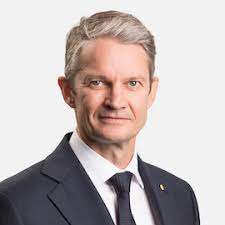
“Like many, I often get labelled a fearmonger. As we approach our fourth wave for 2022, shortly after our most lethal wave of the pandemic – on track for 25,000 deaths for the year and with a likely Long Covid toll of 500,000+ – what we’re seeing is actually worse that I thought.”
The Premier of Victoria allows his Health Minister to suppress an expert Report on the Virus until after the State election on November 26. If you think about this decision, it is outrageous – somebody with no health expertise rejecting advice for political gain. It is tantamount to same person in a different portfolio advocating doing nothing about a fire out of control until a political event has passed.
The stark message from Brendan Crabb is the pandemic is still out of control. Yet has Australia an adequate mechanism to reimpose restrictions should we need it? I shall continue to explore it in my next blog.
Getting Stoned
There are rocks; and then there are rocks. The “Rock” in Australia was associated before 1993 with Ayers Rock named after a colonial South Australian functionary, Henry Ayers; named now Uluru meaning “great pebble” in the local Anangu language for the sacred site. Uluru epitomises the Red Centre, especially at sunset. Even during the day, Uluru is red and walking around the perimeter one is faced with trabeculated inglenooks, where you can imagine that the local indigenous people would have found shelter. Walking around the periphery one gets the sense of sheer size of the rock which is magnified by the fact that it rises from a basically flat landscape. It is unsurprising that has spiritual significance
But there are other geological formations – I have visited a number of these “rocks” throughout Australia, like the nearby domed rocks once Mount Olga now renamed Kata Tjuta; the Devil’s Marbles or Karlu Karlu, near Tennant Creek; Hanging Rock, a mamelon perhaps with the Aboriginal name of Ngannelong near Melbourne; Mount Wudinna outside the town of the same name in South Australia; but most of all Mount Augustus in Western Australia.

Mount Augustus or Burringurrah is approximately 300 km east of Carnarvon. Its size dwarfs that of Uluru. Named after Augustus Charles Gregory, in an outburst of fraternal generosity by his brother Francis Gregory who, on 3 June 1858, during his exploratory journey through the Gascoyne Region, became the first European to climb it. It is difficult to reach.
Whereas Uluru is approximately nine kms around the base, it is about 43 kms to circumnavigate Mount Augustus. You need a vehicle to drive around it. Because of the landscape being more treed than that around Uluru it does not at first appear to have the same significance, yet when you get up close you realise how impressive it is.
When we were there, the local nurse volunteered to drive us around the rock – a hair raising trip as he obviously thought he was engaged in a single man rally. Eventually all things must come to an end. The car hit a large pothole, fortunately near the camp, which resulted in a burst tyre. The drive made such an impression on our pilot that he said: “I’ve flown in some pretty terrible conditions, but frankly your driving terrifies me more than any I’ve experienced as a pilot! The fact that this nurse’s tenure was able to be maintained at the remote site exemplifies the problem of finding sane, let alone suitably-trained health professionals in remote areas.
Unlike other places in the Review, the male elder greeted us with suspicion and a taciturnity that I interpreted as him wishing we would just go away and leave his settlement in peace. One of the women showed us her artworks, one of which we purchased. Visiting Mount Augustus was just part of the Rural Stocktake visits, which included visiting a number of remote settlements across the Nation.
I had already been involved in setting up a rural clinical school at Geraldton in Western Australia, which meant I had already travelled extensively in this region – north to Exmouth Gulf, east to Meekatharra and south to the small wheat belt communities, so the excursion to Mount Augustus, which I had heard about through my association with rural Western Australia was a deliberate inclusion.
However, it was very much fly-in-fly-out’, and thus one of the less satisfactory yet eye-opening visits I made during the six months of that Review. Nevertheless, people may talk about Uluru and its majesty, but Mount Augustus itself is something else.
For the record Uluru is a rock monolith consisting of a single rock (and sometimes called a land iceberg given most of its mass is below ground) while Mount Augustus is a monocline formed by a geological linear, strata dip in one direction between horizontal layers on each side; but to me, they are both just humongous, impressive rocks.
Dual in the Sun
I was intrigued by the following newspaper report recognising that the newly minted Nobel Laureate joined a select group.
In winning the award on Wednesday, Dr. Sharpless became only the fifth person to win two Nobels, having received the chemistry prize in 2001 for his work on chirally catalyzed oxidation reactions. The other two-time winners were Marie Curie, John Bardeen, Linus Pauling and Frederick Sanger.
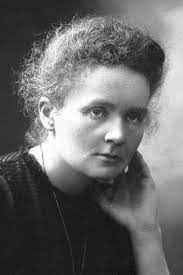
I already knew about Marie Curie and Linus Pauling.
Together with Pierre, her husband, Madame Curie shared half of the Nobel Prize for Physics in 1903, for their study into the spontaneous radiation discovered by Henri Becquerel, who was awarded the other half of the Prize. In 1911 she received a second Nobel Prize, this time in Chemistry, in recognition of her work in purifying radium.
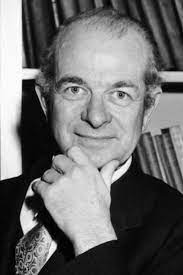
Linus Pauling in my younger years always stood out as the bloke who flogged large doses of Vitamin C for the common cold. He was so wrong in relation to Vitamin C compared with his sure-footedness in his journey through the then new world of quantum mechanics for which he was awarded his first Nobel Prize for Chemistry. His second Nobel Prize was for Peace, awarded nine years later in 1963 for his unremitting opposition to nuclear war, in fact it was the same year the USA, Soviet Union and the United Kingdom signed the Limited Nuclear Test Treaty.
With a bit of prompting I did remember John Bardeen.
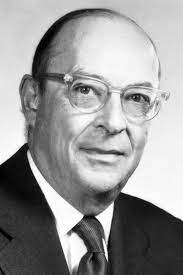
John Bardeen was a physicist and engineer. He was awarded the Nobel Prize for Physics twice, both collaboratively. The first was in 1956 for the invention of the transistor; and the second in 1972 for the fundamental theory of conventional superconductivity.
His discoveries, albeit inventions, were probably as influential in the day to day life of the average citizen as any Nobel Prize winner in that field.
The transistor revolutionised the electronics industry, making possible the development of almost every modern electronic device from telephones to computers, and ushering in the Information Age.
Bardeen’s work in superconductivity eventuated in its application to nuclear magnetic resonance spectroscopy (NMR), medical magnetic resonance imaging (MRI), and the more esoteric superconducting quantum circuits.
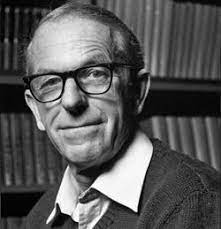
Frederick Sanger sequenced insulin for the first Nobel Prize, and then he came back for his second award for his developing methodology to sequence DNA. His first technique was soon replaced by technology developed by Pehr Edman which led to the development of the sequenator. Nevertheless, his technological discoveries in relation to DNA paved the way for the elucidation of the genome. I note that a number of his post graduate students have won Nobel Prizes, which suggest that he understood well the politics of the Nobel Prize, a consideration increasingly important in the quest for scientific recognition – and he lived a long life which sometimes helps.
Now the plaudits are there for Barry Sharpless for works in two fields of chemistry. With the exception of Pauling, these men and one woman won their prizes because of their supreme ability to navigate the laboratory. For many of us, the heroics of the discoverers – the navigators are on land and sea – were the achievements which are easy to understand. In the world of the unseen, it is more difficult to recognise these laboratory explorers.
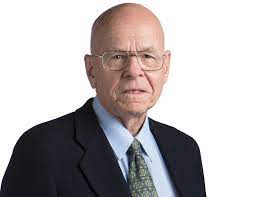
To understand Sharpless’s first shared Nobel Prize, one must understand that molecules appear in two forms that mirror each other – just as our hands mirror each other, but are not superimposable. Such molecules are called chiral. In nature one of these forms is often dominant, so in our cells one of these mirror images of a molecule fits “like a glove”, in contrast to the other one which may even be harmful. Pharmaceutical products often consist of chiral molecules, and the difference between the two forms can be a matter of life and death, just to quote one source.
Sharpless developed molecules that can catalyse important reactions by oxidation techniques, while the other two scientists who shared the prize used hydrogenation – the end point being that only one of the two mirror image forms is produced. L-Dopamine used in the treatment of Parkinsonism is one example.
Now Sharpless has bobbed up with a share of the 2022 Nobel Prize for “for the development of click chemistry and bioorthogonal chemistry”. I shudder – “click chemistry”? What next? Molecular shears? *
Then I searched around and read that “Click Chemistry” is a term that was introduced by Sharpless in 2001 to describe reactions that are high yielding, wide in scope, create only byproducts that can be removed without chromatography, are stereospecific, simple to perform, and can be conducted in easily removable or benign solvents. He has been one busy scientist; get one Nobel Prize and 21 years later, the second – and all due to judicious use of copper catalysts.
I would suggest that it would be difficult to win two prizes in Clinical Physiology and Medicine; and well nigh impossible in Literature.
However, the International Committee of the Red Cross has won the Peace Prize three times (1917, 1944 and 1963), and the Office of the United Nations High Commissioner for Refugees has been awarded the Nobel Peace Prize two times (1954 and 1981).
And as for the Economics Prize, a second award? Probably not, unless it is extended to soothsayers and bookmakers as is widely tipped in the hedges of New York and Zurich.
But jesting aside, the more you read about these five individuals especially if one has been an observer of the field of research, the more these people interest, because they all have extensive biographies, which tell the reader all but paradoxically also nothing at all.
An * from Prince Lachlan
Yes, I do know about molecular shears or scissors. They are useful in ensuring a good “heir-cut”, aren’t they?
Like a Nail Drawn Across a Blackboard
There are two responses, which are more punctuation marks akin to the full stop.
“We are taking the matter seriously” reminds me of the judge putting on the black cap before pronouncing the death sentence. Once you hear the words or read them, you know nothing will be done to rectify the particular mess being contemplated by those who have uttered the words. The finality of a death sentence. How few times have the utterers of such words been held to account and asked after a few months to wax lyrical on how they have taken the matter. Seriously?
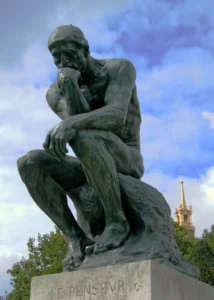
The other response is the exhortation “to take personal responsibility”. It is the mantra for governments to shed responsibility. To use this as a substitute for government intervention, there is almost an element of reproach in people to fail to reach some hypothetical level, where abide the gods of Macquarie Street.
It is all very well to take personal responsibility if one has all the information to make the appropriate choice. Yet distribution of information is not symmetrical throughout the community; and has been made worse by the accession of the Trumps of the world who are unconcerned with evidence to base decision making on, but deliberately contaminate the Information Well with falsehoods.
Mark Humphries, whose comedic talents often exposes politician foibles, wrote inter alia at a time when Morrison was the Prime Minister. It says it all.
After nearly two years of the Prime Minister informing us that various issues were “a matter for the states”, is it any wonder that our Premier (NSW) would embrace this spirit of buck-passing in determining that the issue of mask-wearing should be a matter for the individual? What a thrill to be able to tell our grandchildren that we were there to witness the birth of the next big thing in political theory: trickle-down responsibility. It went about as well as trickle-down economics.”
There are many more public relations mediated responses, but these two will do for the moment. They are bad enough.
Mouse Whisper
Due to sensibilities … I have been asked to relate the following comment directed towards the current United Kingdom Government.
“Now that the ringmaster has left the circus in England, the lions are eating the clowns”.
Can I make the point, that “titmus” derives from a bird not one of ours?
